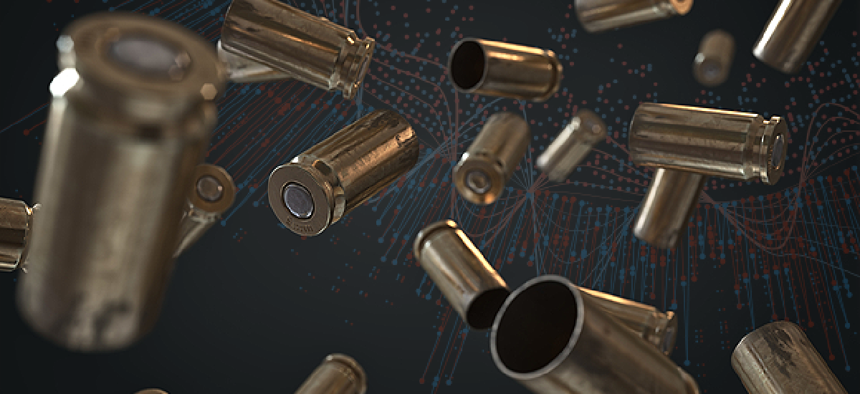Bringing big data to firearm forensics


Connecting state and local government leaders
NIST's Ballistics Toolmark Research Database is helping law enforcement match bullets to guns with greater speed and precision -- and creating the data to advance the forensics even further.
The ability to match a bullet with the gun that fired it is a critical tool for law enforcement, and such forensics have traditionally relied on careful case-by-case comparisons by an experienced examiner.
Hands-on examination by highly trained specialists does not scale, however, so the National Institute of Standards and Technology has developed a high-tech, open-access and crowdsourced solution called the Ballistics Toolmark Research Database to help modernize that process.
Drawing on ballistics data from the FBI's reference firearms collection and other participating law enforcement agencies, NIST is building a vast collection of high-resolution virtual models of fired bullets. Test-fired bullets and cartridge cases, along with information on the guns that fired them, are sent to NIST, where lab technicians scan the samples using a microscope that produces a high-resolution, 3-D topographic surface map. The result is a virtual model of the physical object.
The surface maps produce more detailed comparison data than the 2-D images traditionally used to match bullets. They also remove many of the ambiguities that can cloud traditional matches and help law enforcement agencies speed their investigations.
In addition, the growing library gives researchers the data to develop new identification methods and advance the forensics even further.
The way NIST set about developing the ballistics database is also noteworthy. The Laboratory Information Systems Team created a business plan to use existing IT resources to provide full systems development capabilities in-house. Officials used LIST's fixed budget to fund a multiyear, flexible contract for software development support.
That approach allowed NIST to obtain project management, business analysis, hosting, software development, product deployment and maintenance -- as well as support for Federal Information Security Management Act requirements -- at lower fixed hourly rates than any contract vendor could offer.
NEXT STORY: DOD works to bring data sharing into full bloom




